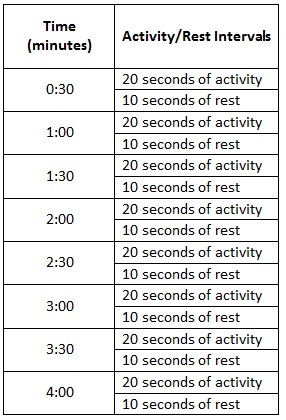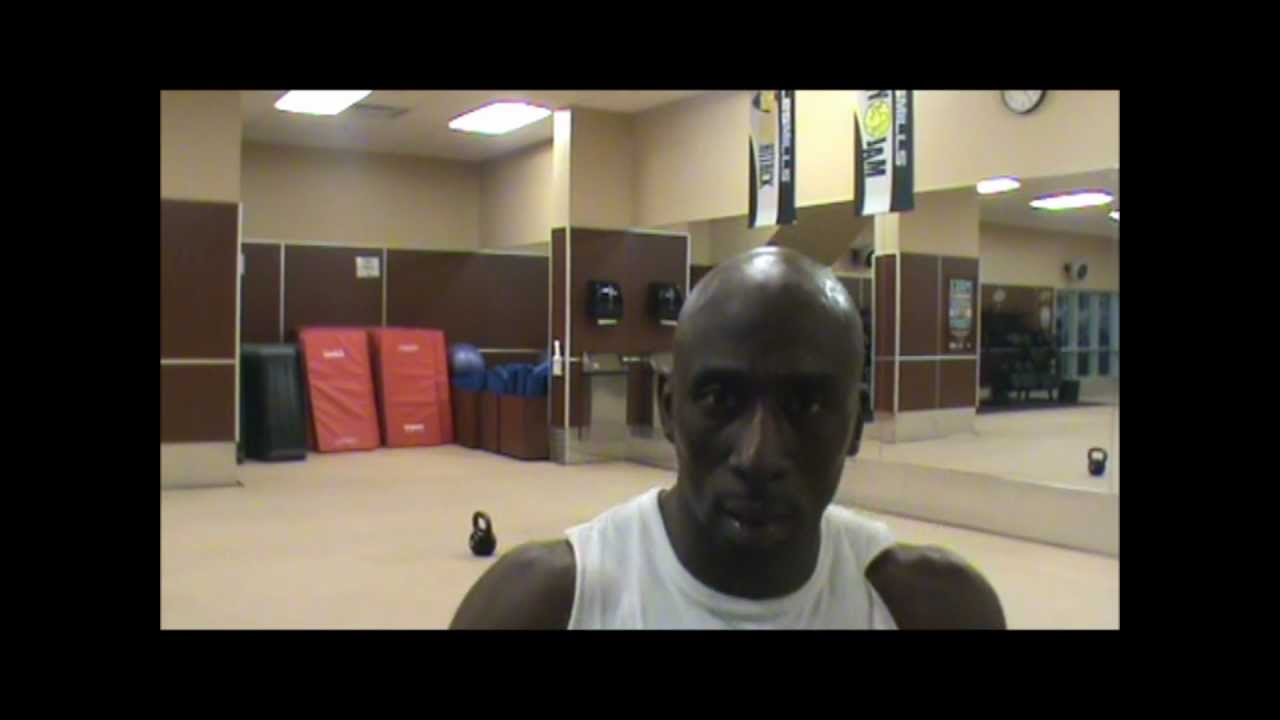Are you searching for a way to add some sugar and spice to your workout routine? Perhaps you are tired of doing the same old routine week after week, and you are grasping for something new and exciting. Try the kettlebell tabata!
Tabata is something that is most definitely quick considering it only takes a total of four minutes to complete, however I can promise you that it surely is not easy when performed using appropriate resistance. It is a workout that will take every ounce of determination in order to complete. If you do not have sweat dripping down your face and your lungs gasping for air, I can only provide you with two explanations: you are either super-human or you are not using enough resistance. Considering the assumption that you are probably not super-human, I would suspect that you are not using a high enough resistance.
With that being said, let me explain the process that makes up a Tabata workout. As mentioned above, a Tabata workout involves a total of four minutes. These four minutes are divided into 20 seconds of a specific activity that you choose followed by ten seconds of rest until four minutes is reached. The goal during the eight, 20 second physical activity time periods is to complete as many repetitions as possible. The sequence is more clearly displayed within the following table:

The first time that I was introduced to the Tabata workout dates back to a couple of years ago while I was reading long-time, strength and conditioning coach Dan John’s book, “Never Let Go.” In his book, Dan (2009) claims that “the front squat may be the single best Tabata lift.” Among his recommendations, he states that the exercise should involve a multitude of muscle groups and that you should start out with a relatively light weight. For example, he recommends that you stay between 65 to 95 pounds when doing the Tabata front squat (John, 2009). You may ask why such a low weight? I was actually curious myself when I read that. I came to find out that if I did not take his advice I probably would not have finished the four minutes. When I tell you that the Tabata workout holds the most brutally, exhausting four minutes of my life title, I mean it in every sense of the description. I would even go as far to say that it is the most brutally, exhausting four minutes of physical activity that one can take part in, period.
I recommend that you start out with a weight that appears to be without a doubt manageable regardless of the activity you decide to do. If you are finishing the workout with 12 to 15 repetitions, I recommend that you increase the resistance. Whereas, if you are finishing between 0 to 3 repetitions, I recommend that you use a little less resistance. I have found that the optimal range to aim for is between eight to ten repetitions.
With that being said, the few important take home notes to consider include:
* Choose an activity that involves a whole body lift. It is highly unlikely that you would be able to finish the four minutes using an isolation exercise such as the bench press for example. The video linked below shows a Tabata workout involving kettlebell swings which also is a movement that incorporates the body working as one unit rather than working in isolation.
* Aim for the range of approximately eight to ten repetitions in completion of the workout.
* Use a manageable weight especially on the first attempt of a Tabata workout. You can always add more weight for the next trial if needed.
Tabata workouts are best used on days where time is limited or at the end of your workout. It also can be extremely beneficial for someone who is trying to cut fat mass, or someone who is just looking to add some variety to their workouts. It also has benefits in improving both anaerobic and aerobic pathways (John, 2009).
Last but not least, the following video sets you up with some tunes that provide all of the timing necessary for the completion of the workout. It is definitely a resourceful tool and I recommend that you take advantage of it. I can assure you that the less that you have to worry about during your four minutes of hell, the better off you will be.
Greg is an exercise science major at Shippensburg University of Pennsylvania with minors in biology and coaching. He is also a lifelong athlete – involved in the sports of basketball, baseball, football, track & field and volleyball growing up. Competed at Shippensburg University in the shot put, discus, and hammer events as a Division II Track & Field athlete.


Comments
“If you do not have sweat dripping down your face and your lungs gasping for air”
I did one Tabata session a few days back using 5.7 kilogram sledgehammer. It was BRUTAL on the lungs and heart, but I had hardly any sweat after it. But who cares, it’s an awesome workout and while squats and and jumps are of course great, you should definitely try sledgehammer. And hit it on something relatively hard, which increases that “double pulse” effect, which Dr. Stuart McGill has spoken about regarding punches in MMA: First phase is creating tension to start the movement, the second is relaxation without which the movement would slow down/stop and the third phase and the second pulse is tension just before the fist(or the sledgehammer in this case) hits the target to ensure maximum energy transfer. That’s why I think sledgehammer is much better than throwing medicine ball to the ground, because the latter only has two phases: tension and relaxation.